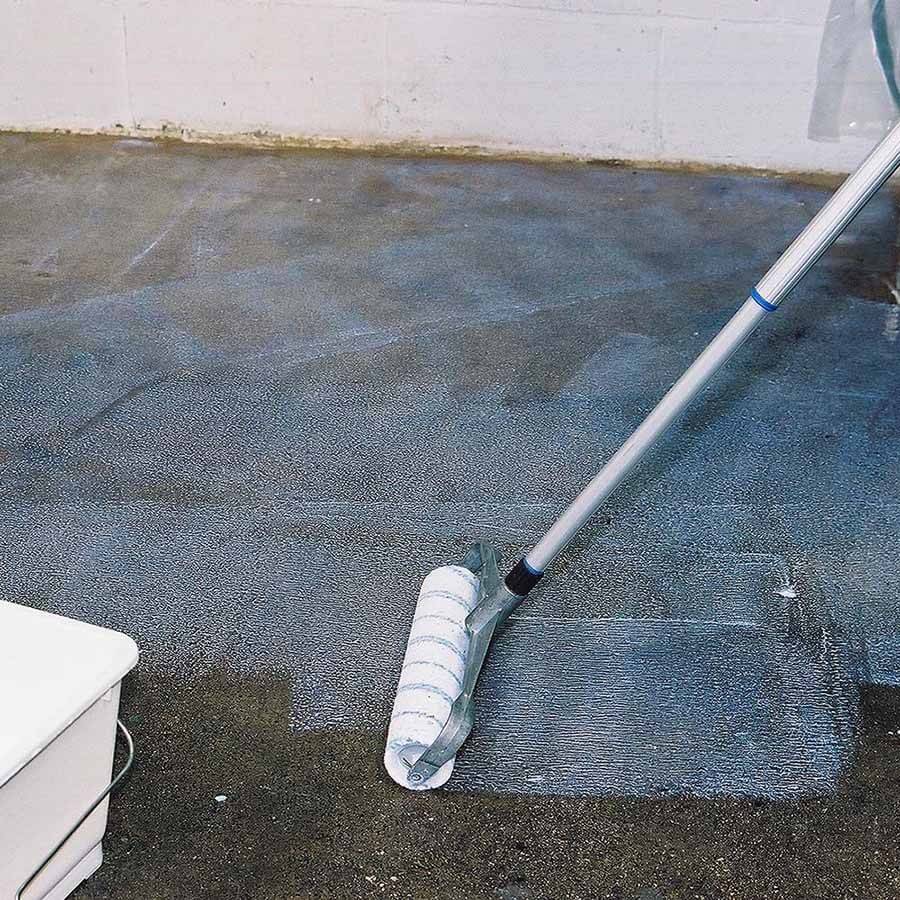Painting concrete surfaces require more skill and time as compared to painting drywall. Here’s how to do it in the right way!!
Do you have boring and faded looking front porch areas? Or have discolored and rough concrete entrances? If yes, then it’s time to bring back life to it. Whether you have interior and exterior concrete surfaces, they all become rough as the time passes. But the main thing is that you don’t need to keep them as always, just paint them in your favorite color. Don’t know how to paint concrete? No worries, just read this blog as today we brought a step by step guide on painting concrete.
Many people think it is as simple as painting concrete walls or drywall, but it is not. Actually, it is slightly trickier than that because the concrete surface breathes, transports moisture, and sucks up paint. While drywall only takes a day or two, the concrete surfaces may take a week or more to finish painting. So to know the tips and tricks on how to paint concrete surfaces, keep on reading.
So it’s time to say goodbye to those ugly and unpleasant looking concrete floors and say hello to the glossy looking floors. You can create an interesting and beautiful looking concrete by applying a few coats of paint. And during this pandemic time, it is the perfect time to do this task. So grab the below tools and materials, and let’s get started.
Tools Required

Below is the list of tools and materials requires while painting a concrete surface:
- Concrete filler
- Pole sander
- Power sander with fine-grit disks
- Wire or Metal Bristle brush
- Trisodium phosphate or other alkaline cleaners
- Paving paint (or porch and floor enamel)
- Paintbrush or roller
- Putty knife
- Protective gear (dust mask, rubber gloves, glasses)
5 Super Easy Steps to Paint Concrete Floors
After you’re ready with the right tools and materials it’s time to paint your concrete floors. Follow these five steps carefully to get an incredible looking concrete surfaces:
#1: Wash the Floor

Before you start to paint your concrete floors, it must be clean. So with the help of a solution of trisodium phosphate (TSP) and warm water, wash the surface area thoroughly. This will remove all the grease and oil that cause discolor to the paint later.
Use a metal-bristle brush to wash the concrete surface. Carefully read the instructions before mixing the solution with water. Make sure to wear masks, gloves, or other necessary protective gear because TSP can harm your skin and eyes.
#2: Sand and Vacuum the Floor

The next step is to sand and vacuum the concrete floor. With the help of a sander machine or sandpaper, scrub away all the surface. This way, your floor will be free from old paint, but also it removes all the uneven surfaces.
After you’re done with the sanding, just use a vacuum to clean it. You can also use a wire brush or a paint scraper to get rid of old paint marks. Another way is to clean it with a power washer; it is easy and fast.
#3: Fill Cracks and Holes

After your concrete floors are cleaned, it’s time to fill the cracks and holes. Some people find this step unnecessary and skip this, but it is a crucial step. Because if you start painting straight away, you’ll see that the paint will not look as graceful as it should look. So, patch those cracks and holes with a concrete filler or patch compound. Then leave it for some time so that it will dry completely.
#4: Apply Primer

Before painting your concrete in your favorite color, you need to paint it with a primer. This will help paint to stick properly. You can use any concrete primer or block primer to this. Apply two coats of primer on your floor with the help of a paint roller. But always let the first layer dry completely before you put the second layer.
#5: Apply Paint

Finally, it’s the right time to paint your concrete floor in your desired color. There are various types of paints available in the market. Most people prefer masonry paint, but you can use any paint.
The reason why many people prefer masonry paint is that it is formulated to contract and expand as concrete changes temperature. It is also known as elastomeric paint or elastomeric wall coating. If you’re using this paint, use a high-capacity roller or brush because it is quite thick compared to the regular paints.
Apply a thin layer of a coat with a paintbrush or roller. Start with the corners, and slowly move forward.
Let it Dry

Once you’re done painting the first layer, leave it for at least 24 hours to dry completely. This is very important to do; otherwise, you’ll end up with messy looking floors. Once it dries good enough, then apply the second layer of paint. After the painting process gets completed and if you want, you can add an extra coat of masonry sealer.
Painting a concrete surface is quite simple and an inexpensive task that you can do all by yourself. To look paint beautiful, you have to follow the above procedure carefully. If you do, you’ll get satisfying results regardless if it is your garage floor, outdoor patio, or basement floor, or all.
Continue reading:

